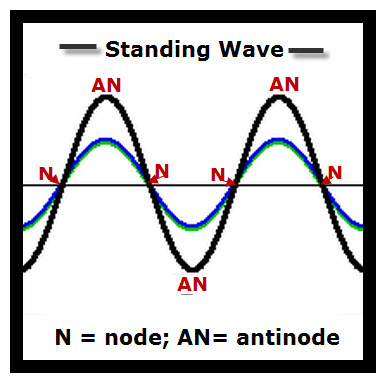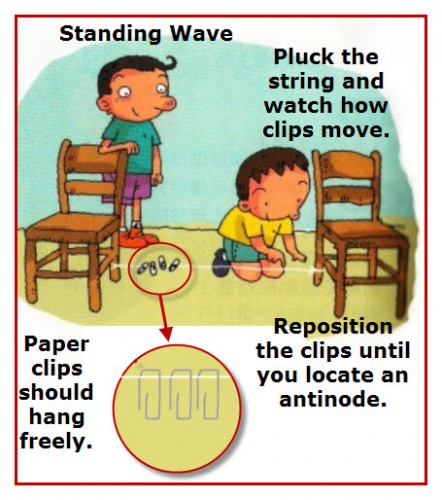What Is A Standing Wave?
A standing wave is the pattern produced in a medium as the result of the repeated interference of two identical waves moving in opposite directions through the medium.
All standing wave patterns have nodes and antinodes. The nodes are points of no displacement caused by the destructive interference of the two waves. The antinodes result from the constructive interference of the two waves and thus undergo maximum displacement from the rest position.
Antinodes: The points in a standing wave with maximum displacement from the resting position. The antinodes result from the constructive interference of the two waves. This means the waves are in phase and the combination of their energy moves the medium the greatest distance from its resting position.
Nodes: The points in a standing wave with no displacement. Nodes result from the destructive interference of the two waves. This means the waves are out of phase (one wave moves up and the other wave moves down) and the combination of their energy is zero. Thus the medium doesn’t move at all.
FYI: The Law of Superposition describes the effect on a medium when two or more waves pass each other as they travel through the medium. The waves can be traveling in the same direction or in different directions, but the waves pass through each other without being disturbed. This means that the individual waves do not change. Only the medium is affected by the constructive and destructive interference when the waves pass each other. .
For more information, see this Animated Image of the Production of a Standing Wave.
Activity
I read that if a paper clip is placed on a vibrating string at an antinode, the paper clip will spin around the string. This same source of information stated that a paper clip placed any where but the antinode may vibrate but will not spin around the string.
What do you do think? Is this really true? How can you find out?
Clue: The diagram gives you clues for testing and discovering the answer for yourself.
Waves and other things
about physics can be found in:
(Paid Link)
Big Book of Science Experiments
A book of fun informative experiments about astronomy, biology, chemistry, earth science, and physics.
(Paid Link)



